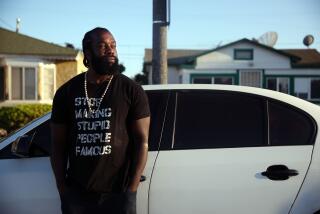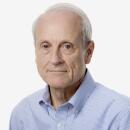When a cyclist is killed, why does the driver get the benefit of the doubt?
- Share via
California Bicycle Coalition Executive Director Dave Snyder looked out at a roomful of about 200 bicyclists and asked them if they knew someone who had been killed or seriously injured while riding. Roughly a third of those gathered raised their hands.
His aspiration, Snyder said Saturday at last weekend’s California by Bike summit in Oakland, was that in 20 years, no young riders would raise their hands.
It’s the right goal, of course, but the question and the answer were both sobering. At one conference session after another, cyclists reminded one another that bike riding is fun but that there is no getting away from the fact it can also be quite dangerous.
FULL COVERAGE: Sharing the road in L.A.
A cycling activist from Bakersfield noted that there have been three bike and pedestrian deaths in her city in the last six weeks. Attorney Stephen Bingham spoke of his daughter, Sylvia, who was riding her bike in Cleveland when a truck ran her down in 2009. San Francisco Bike Coalition Director Leah Shahum talked about the unsupportive reaction — from her description, I would call it outright hostility — from police at a gathering to honor the memory of a cyclist killed in the SOMA district. Grace Voss of the Santa Cruz County Cycling Club told me of a cyclist killed this month by a car that veered off the road.
As it happens, those last two were mentioned in a New York Times op-ed that ran over the weekend, as the conference was underway. “Is It O.K. to Kill Cyclists?” asked the headline of the piece by Daniel Duane, a contributing editor for Men’s Journal.
And the response, from both the cyclists gathered in Oakland and from Duane, was that the reaction from authorities sure makes it seem like they think it’s OK. Drivers rarely get cited, even after a fatal collision. Bike riders assumed the risk.
San Francisco attorney Miles Cooper explained that police officers rarely ride bicycles on the job; they drive cruisers. They see things from a driver’s point of view. Perhaps each officer should spend six months on two wheels to get a better perspective, he said.
Perhaps. It couldn’t hurt. But the fact remains that public streets, being shared spaces, are also contested spaces, and in any showdown, cars have roughly a two-ton advantage. And drivers, for now, are protected by the benefit of the doubt.
I don’t ride a bike. Sometimes I walk to work, sometimes I drive. When I’m driving, I find myself leaving earlier and moving slower, in part because the number of cyclists on the streets between my home and The Times has increased and I want to steer as clear from them as I possibly can. And those are among the goals of the cycling movement: Slow drivers down. Make them pay attention. Make them more responsible.
Those are good things. I’m all in. I’m just not on.
ALSO:
Housing homeless vets in West L.A.
The cure for retailers ruining Thanksgiving: A federal blue law
This post is part of an ongoing conversation to explore how the city’s cyclists, drivers and pedestrians share and compete for road space, and to consider policy choices that keep people safe and traffic flowing. For more: latimes.com/roadshare and #roadshareLA.
More to Read
A cure for the common opinion
Get thought-provoking perspectives with our weekly newsletter.
You may occasionally receive promotional content from the Los Angeles Times.











